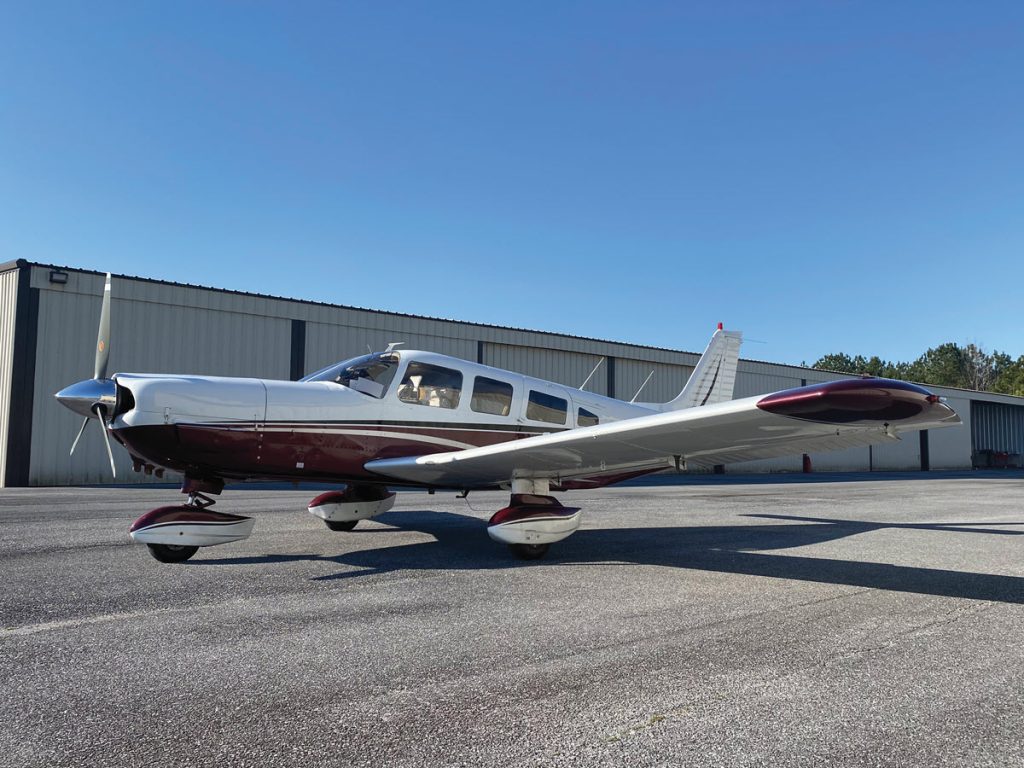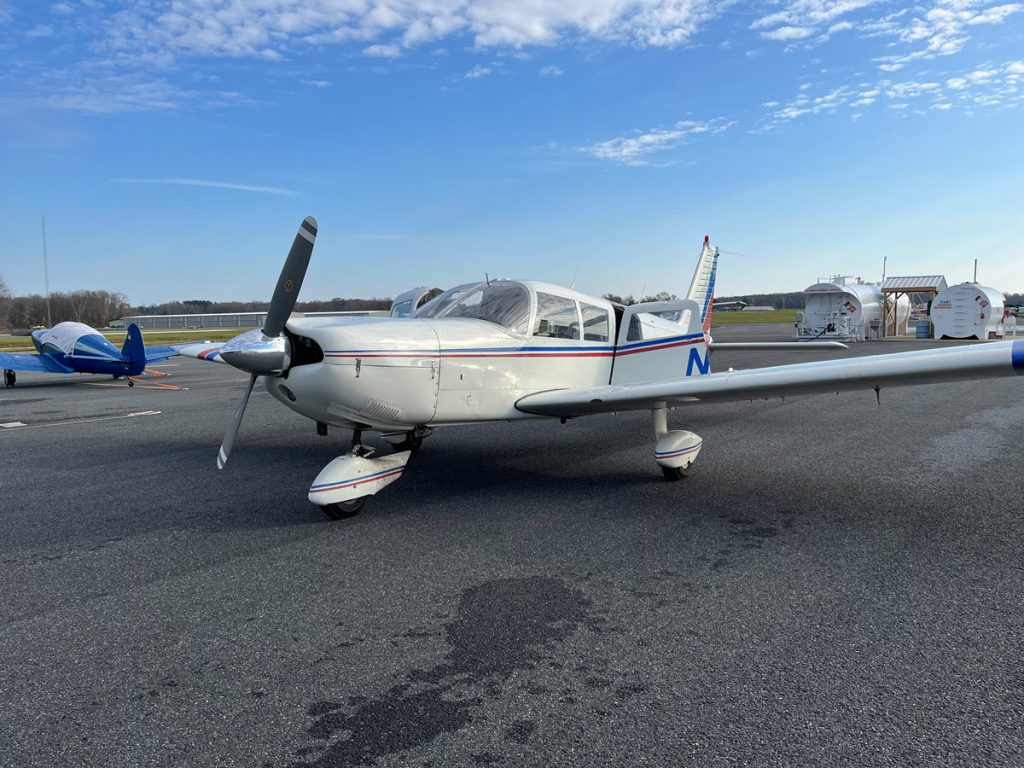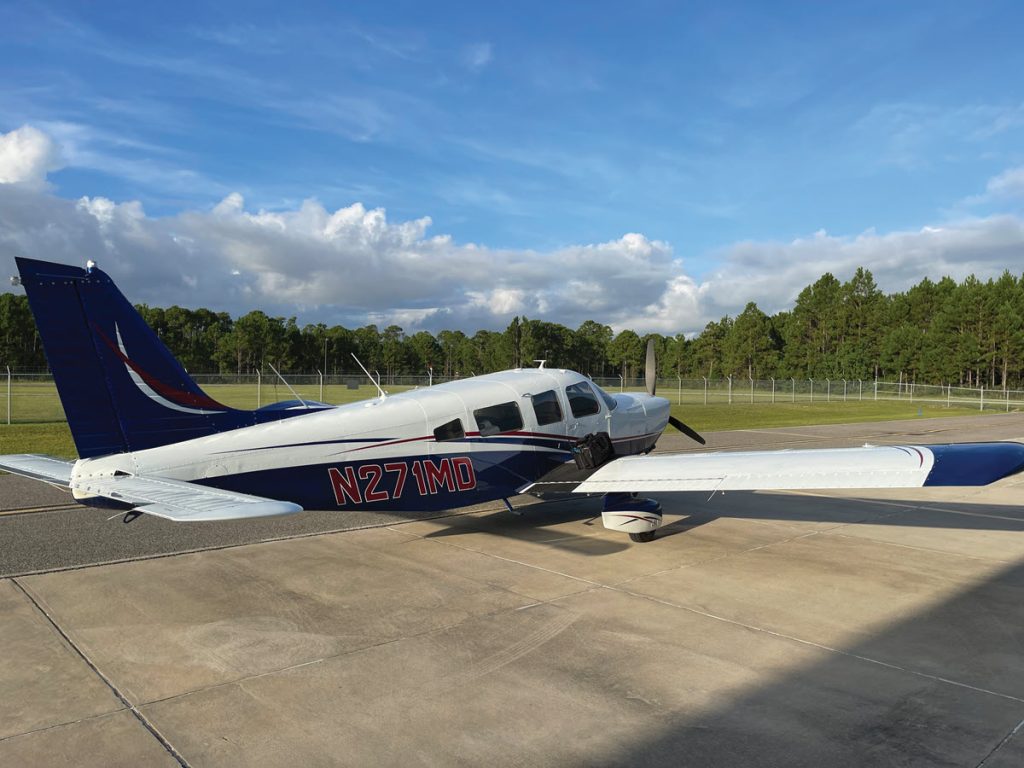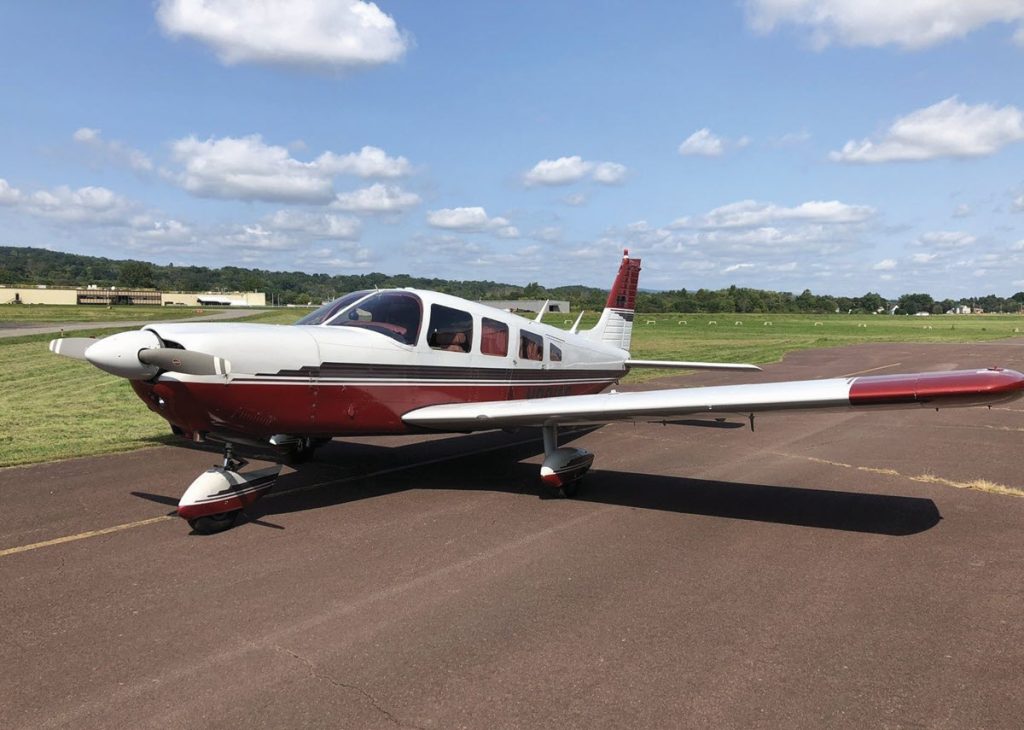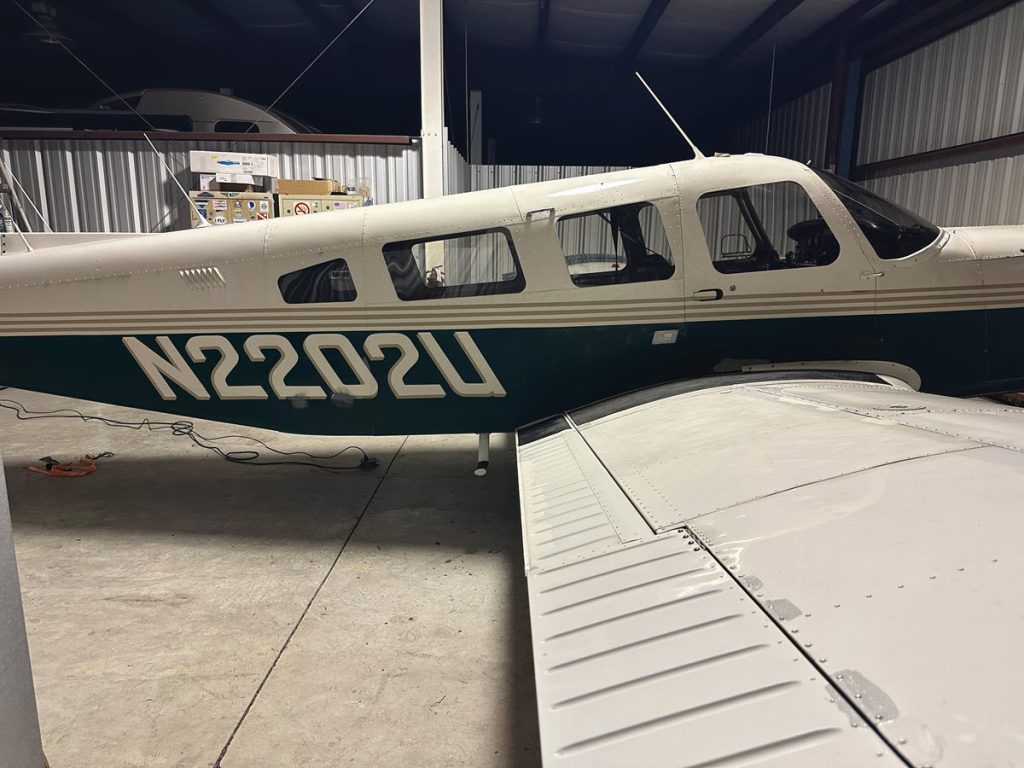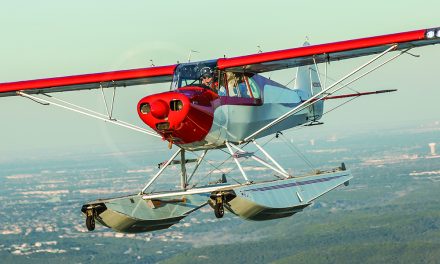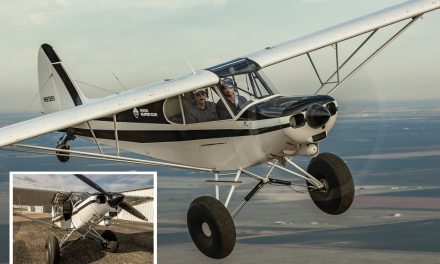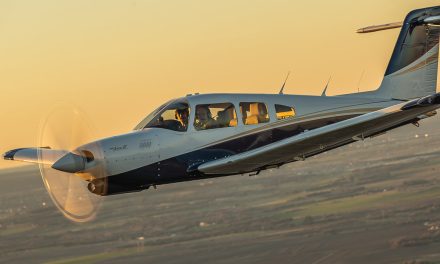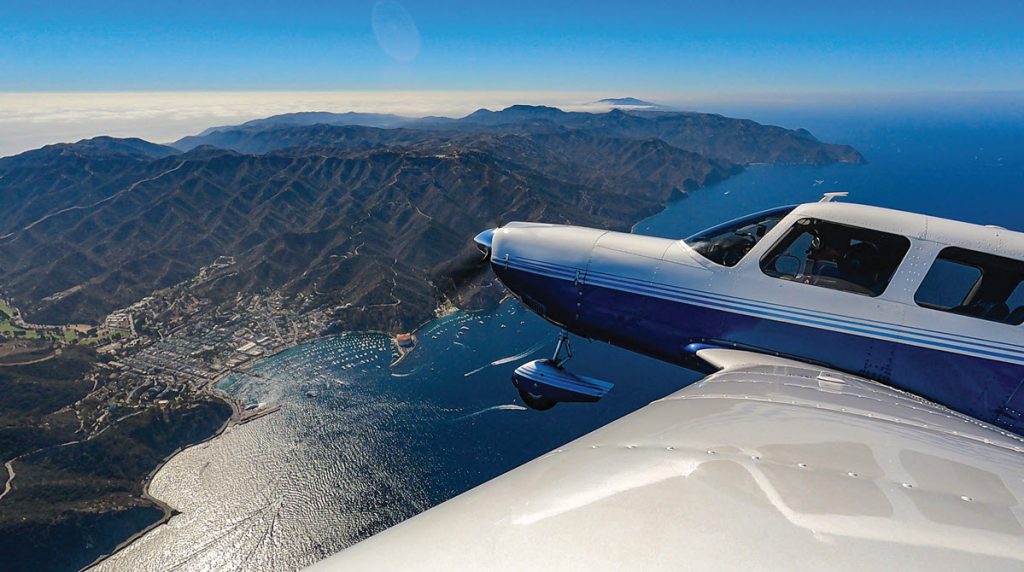
In-Depth Reviews and Advice From Owners
By Dan Brownell
Although the Cherokee Six doesn’t fit everyone’s budget or mission, it’s a fantastic single-engine option for cross-country flights because of its large passenger and payload capacity. This makes it ideal for business travel, family vacations, and humanitarian missions. Moving into an even larger plane typically means stepping up to a twin-engine model, which greatly increases fuel and maintenance costs. No wonder it has remained a favorite in its category for decades!
CHEROKEE SIX REVIEWS AND TIPS FROM PIPER OWNER SOCIETY MEMBERS
Cherokee Six Pre-Purchase Tips
Matias Barbero, Cape Coral, Florida, 1971 PA-32-260
Do a really good pre-buy. I did mine at a place recommended by the broker, and it was by far the worst decision I ever made.
Brian Kincaid, Warsaw, Indiana, 1979 PA-32-300
Things to think about:
- What is your primary mission?
- Consider value versus speed and comfort.
- Cost of ownership, serviceability, and parts availability.
Marshall Lauer, Voorhees, New Jersey, 1969 PA-32-300
Spend time with an instructor familiar with the Cherokee Six and get your instrument rating.
Evan Bogan, Acworth, Georgia, 1978 PA-32-300
- Consider using a broker. Good airplanes sell before they even hit the market.
- Find a CFI with time in type for a transition course. These airplanes are not trainers and fly more like bigger airplanes than smaller ones.
- Know that 1978 and earlier models have four separate fuel tanks. They require careful fuel planning and monitoring.
Timothy Burnett, Birmingham, Alabama, 1978 PA-32RT-300T
Don’t be afraid to transition from a 172 soon after getting a Private Pilot Certificate (PPC). Just get proper instruction and transition training.
Shane Reichardt, Corona, California, 1974 PA-32-300
It’s a very stable platform. Four fuel tanks require proper attention, but a solid plan for timing tank changes isn’t hard to manage. The Cherokee Six glides like a helicopter. If you can see it out the window, you probably can’t glide there.
The seventh seat may impact your insurance rates.
It really is the Suburban of the skies. Get to know how differently the plane handles when it’s just you out for a joy ride and when you’ve got all the seats filled and at max gross weight.
Darius Moghadam, Henderson, Nevada, 1979 PA-32-300
If you’re a low-time pilot, you can insure it for four seats to build time, so if you really want a Six, buy one. It flies like a slightly heavier Cherokee, mostly heavier in pitch, but it’s a very stable airplane. It’s a simple airplane overall. Don’t be afraid of buying one with a higher-time engine if it has been flown regularly.
Matthew Dismore, Gulfport, Mississippi, 1979 PA-32-300
This is a very sought-after plane, so you need to stay on it and maybe even have a few brokers looking.
It’s priced sky-high right now, so shop it around and negotiate.
Get an extensive pre-buy.
Fixed gear with the right mods from Knots2U makes it only 5 kts or so slower than the RG. I keep hearing nightmares from those with RG, as these are 40+ years old and the insurance just isn’t worth it.
Michael Minor, Summerland Key, Florida, 1976 PA-32R-300
Get it while you can. They go fast and the price seems to keep increasing. I finally gave into buying one available and hoping for the best. I got lucky.
Jeffrey Olson, Naples, Florida, 1983 PA-32R
Spend time and money for a complete pre-buy. Have an engine compression and borescope done. Get a comprehensive review of logs. Pay attention to all ADs. Have all known corrosion sites inspected. Ensure all avionics are operational.
Charles Patterson, Springfield, Ohio, 1975 PA-32-260
It’s great for families. The weight and balance are pretty flexible with luggage in front or rear.
It’s not a speed or altitude champion. Think of it as a minivan.
Keep power in it on landing. It sinks rapidly without power.
Mark Wollen, Poway, California, 1969 PA-32-300
Be aware of the various wing spar ADs and inspections.
Although not generally a problem, I’d be especially concerned about a high-time airframe with a history of hard use, or one that has spent a lot of time in a corrosive environment.
Weatherstripping and leaks around doors can be a problem, especially on some earlier builds, where the door alignment might be a little off.
Old engine cowlings can be a problem area (and expensive to replace) if the fiberglass is starting to deteriorate.
As with any older aircraft, look closely at avionics upgrades and quality of the wiring or be prepared to do a major panel upgrade if you buy an aircraft with subpar or worn-out wiring and avionics.
Lawrence Mangus, Green Cove Springs, Florida,
1971 PA-32 260
Spar
Anti-corrosion
Avionics
Bruce Brotman, Chantilly, Virginia, 1966 PA-32-260
Fly often.
Hangar it.
Baby it.
How Does the Cherokee Six Compare?
Marshall Lauer, Voorhees, New Jersey, 1969 PA-32-300
Cherokee Six versus Cessna 172
The Six is more stable, faster, and has much more load capacity.
Evan Bogan, Acworth, Georgia, 1978 PA-32-300
Cherokee Six versus Lance
The Six gives up 12-15 knots to a Lance but is less expensive to maintain and insure. PA-32 forums are full of people discussing issues with the retractable gear systems in their Lances and Saratogas. The Six is always down and locked!
Shane Reichardt, Corona, California, 1974 PA-32-300
Cherokee Six versus Cessna 172
I previously owned a Cessna 172, and until I owned my Cherokee, the majority of my time was in a Skyhawk. Transitioning from high wing to low wing took a little time. The biggest challenge was figuring out where to flare for landing and how much to flare. In the Skyhawk, I could reduce power on final and easily make it to the numbers. In the Cherokee, I keep power until short final, which can make the flare a little different. I went from a Cessna 172 to my Cherokee Six. The biggest difference was the glide ratio and the landing flare. Whereas my Cessna had a STOL kit and was almost hard to get to the ground, the Cherokee glides like a helicopter.
Darius Moghadam, Henderson, Nevada, 1979 PA-32-300
Cherokee Six versus PA-28 models
For room and utility, you can’t beat the Cherokee Six. It’s like flying a Suburban, and there aren’t really any other airplanes like it in the market.
Cherokee Six versus Cessna 206. The Six has a lot more room than a C206.
Nicholas Masters, Ocala, Florida, 1979 PA-32-300
Cherokee Six versus Mooney M20J
The advantage of the Cherokee Six over the Mooney is the room inside plane. Having a PA-32-300, I haven’t noticed a real difference in the performance of one plane versus the other. Granted, the Mooney ran on 10-11 gallons per hour versus the Cherokee Six’s 15-18, but with the speed mods on the Six, my cruising speeds are comparable to the Mooney, with more room.
Matthew Dismore, Gulfport, Mississippi, 1979 PA-32-300
Cherokee Six versus Cessna 172
Besides the Six, 99% of my time is in a 172, and there is no comparison.
Michael Minor, Summerland Key, Florida, 1976 PA-32R-300
Cherokee Six versus Cessna 172
The Six’s advantage is its useful load, range, speed, and comfort. The disadvantage is its higher fuel consumption.
Jeffrey Olson, Naples, Florida, 1983 PA-32R
Cherokee Six versus Cessna 172
There’s no comparison. The PA-32 is like an airliner. It’s got speed, comfort, and load capacity.
Charles Patterson, Springfield, Ohio, 1975 PA-32-260
Cherokee Six versus Cessna 210
The Six is slow and steady. It has lower fuel cost, and with fixed gear it has lower maintenance.
The 210 can be a maintenance hog, but it will move 40 knots faster, for the added fuel.
Mark Wollen, Poway, California, 1969 PA-32-300
Cherokee Six versus Cessna 206
The PA-32 is easier to load with passengers and baggage due to its huge back door, has a wide CG envelope, and is, in my opinion, more fun to fly.
Compared to about anything, the PA-32 is a spacious workhorse. It has lots of room, feels super solid, and is a stable cross-country and instrument platform.
Lawrence Mangus, Green Cove Springs, Florida, 1971 PA-32 260
The Six is hard to beat in overall utility. It has an incredible useful load, decent speed, and is a very stable platform. I love the roominess and simple operation.
Bruce Brotman, Chantilly, Virginia, 1966 PA-32-260
I have lots of time in Turbo 210, Mooney, and C182. I recently sold my Turbo 210, preferring to keep the Six. I’m an East Coast flyer, and I don’t mind taking a little more time to get where I’m going. I love the Six’s hauling capability and that it is far less expensive to maintain and insure.
What Should Always Be Upgraded/Restored on a Used Cherokee Six?
Matias Barbero, Cape Coral, Florida, 1971 PA-32-260
Make sure you have fuel senders and at a minimum a fuel flow meter to help manage the fuel. I personally upgraded everything on mine, and now I have a full glass panel.
Brian Kincaid, Warsaw, Indiana, 1979 PA-32-300
Get a basic, relatively up-to-date Garmin GPS/comm and ADS-B setup with ForeFlight on an iPad. You don’t need an all-glass panel if the steam gauges are good. You’ll never get your money back on a full panel upgrade.
Marshall Lauer, Voorhees, New Jersey, 1969 PA-32-300
The panel with electronic AI and HSI, coupled to a good GPS system, i.e., Garmin 530 WAAS, a good audio panel with stereo and Bluetooth and six-place intercom, as well as a decent engine, monitor, and functional autopilot.
Evan Bogan, Acworth, Georgia, 1978 PA-32-300
There is no single correct answer here. Evaluate your mission and upgrade as necessary. For example, I’d love an upgraded interior, but this is a family airplane, and the kids are kind of messy back there! So I put my money into safety-of-flight upgrades. ADS-B In is the most significant advance in flight safety in many years, and a modern engine monitor is a must.
Timothy Burnett, Birmingham, Alabama, 1978 PA-32RT-300T
Engine, avionics, paint, interiors — in that order.
Shane Reichardt, Corona, California, 1974 PA-32-300
I recently upgraded to all glass and a GFC 500 autopilot. Although the plane originally had an Autocontrol IIIC, the advanced features make flights so much more enjoyable.
From my own experience and talking to other owners, the older autopilots tend to wander and require more and more maintenance. I upgraded to the Garmin GFC 500, and flying is so much more enjoyable and relaxing.
Darius Moghadam, Henderson, Nevada, 1979 PA-32-300
Check stabilator bearings, universal joints in the yoke column, and when the fuel servo was last overhauled for 300 hp models. There’s not much to upgrade on a properly maintained airplane.
Nicholas Masters, Ocala, Florida, 1979 PA-32-300
I picked up a Cherokee Six that had minor upgrades done to it. Therefore, I have taken it upon myself to bring the plane into the new century by doing a near complete restoration.
What I consider important in order of priority:
- Avionics. This is a big thing. Putting new technology into a 43-year-old plane gives it a new dimension in flying. In the selection of avionics for my plane, I went with a nearly exclusive Garmin panel with two GI 275s, a GTN 750xi GPS, a GFC 500 autopilot, a GTX 345 transponder, GTR 200B second comm radio, and finally, a PS Engineering PMA8000G audio panel, which comes in stereo.
- Speed mods. I know a lot of pilots question whether it really makes a difference. Well, let me tell you that they do, and the number one mod for adding speed to your plane is the new wheel fairings by Laminar Flow Systems. I purchased the plane with these mods already installed, as well as the Knots2U wing well fairings installed. The plane can cruise at 145 kts all day long. Agreed, the fuel flow is higher than it was with my Mooney at 17 gallons per hour fuel burn versus the 11 gallons I got in the Mooney, but it’s all relative. I wasn’t as comfortable in the Mooney as I am in the Six, and I can carry passengers who are no longer cramped or small in size.
- Interior. I think the look of a plane is just as important as the mission and performance, so I went with Airtex Interiors for the new interior. They have the templates for all the planes, and all I had to do was pick the colors and material I wanted, then do the installation. I upgraded the headliner, side panels, floor, and seats. Not only did it change the dated look and give it a look of today’s interior, but it also added soundproofing, which is a big plus.
Matthew Dismore, Gulfport, Mississippi, 1979 PA-32-300
Avionics, LEDs, and interior. I also removed the left magneto and replaced it with SureFly, which results in much improved cold and hot starts, as well as smoothness. I’m just waiting on the STC to do the same on the right.
Michael Minor, Summerland Key, Florida, 1976 PA-32R-300
Interior and engine/gauge monitoring.
Jeffrey Olson, Naples, Florida, 1983 PA-32R
An autopilot. It’s the best $15,000 you will spend
Charles Patterson, Springfield, Ohio, 1975 PA-32-260
Nav and comm. Legacy autopilots can be pretty reliable, so look elsewhere first.
Mark Wollen, Poway, California, 1969 PA-32-300
Some of the old autopilots were always junk or are now just worn out. It’s best to just remove them if you don’t need them or replace them with a modern autopilot if you do need it.
Lawrence Mangus, Green Cove Springs, Florida,
1971 PA-32 260
Avionics.
Bruce Brotman, Chantilly, Virginia,
1966 PA-32-260
Wing roots.
What Is the Best Reason to Buy and/or Fly the Cherokee Six?
Matias Barbero, Cape Coral, Florida, 1971 PA-32-260
The payload and stability.
Brian Kincaid, Warsaw, Indiana, 1979 PA-32-300
- Value versus speed and comfort.
- Useful load. The Six is a minivan with wings.
- Lower cost of ownership, good serviceability, and parts availability.
Marshall Lauer, Voorhees, New Jersey, 1969 PA-32-300
Stable IFR platform, good cross-country hauler for family or for compassion flights.
Evan Bogan, Acworth, Georgia, 1978 PA-32-300
Its useful load, predictable flight characteristics, and reasonable cost to operate, maintain, and insure.
Timothy Burnett, Birmingham, Alabama, 1978 PA-32RT-300T
It’s a reliable, comfortable load and people hauler. And it’s a very stable IFR platform.
Shane Reichardt, Corona, California, 1974 PA-32-300
Payload, payload, payload. I fly my son and I to Oshkosh and we make it a two-week adventure to visit family and friends in several states. I weighed everything and, even with a ton of camping gear and supplies, I wasn’t even close to limits. I was able to fly full fuel, and with 300 horsepower, performance while loaded was never a concern.
With nearly 500 hours in the Cherokee, I love it. It is a very stable platform, and the ability to fill every seat and still have enough fuel to actually go places is unbeatable. A 1,000 fpm climb while fully loaded is not unusual.
Darius Moghadam, Henderson, Nevada, 1979 PA-32-300
It’s a utility plane and family hauler, with a stable IFR platform. It’s a simple airplane that’s no more expensive to maintain than a PA-28. It just has a more expensive engine at overhaul.
Nicholas Masters, Ocala, Florida, 1979 PA-32-300
- Replacement parts are easy on the pocketbook.
- The look of the plane is a real eyecatcher. It’s sleek, wide, and long. Who can ask for more?
- Ease of flying. As with all planes, stick with the numbers and you have no problems, particularly when landing, but with this aircraft, a little faster won’t be a big factor. Handling is a breeze.
- The mission. If you want or need to carry large items, no problem.
Matthew Dismore, Gulfport, Mississippi, 1979 PA-32-300
It gives me a six-hour range at 140 kts and I’m able to put 800 pounds in it with full fuel of 94 gallons. They call it the sky donkey for a reason — the Suburban of the air.
Michael Minor, Summerland Key, Florida, 1976 PA-32R-300
Cross-country travel for family or business.
Jeffrey Olson, Naples, Florida, 1983 PA-32R
It is practical for almost any mission.
Charles Patterson, Springfield, Ohio, 1975 PA-32-260
If it fits, it ships!
Mark Wollen, Poway, California, 1969 PA-32-300
It’s comfortable, has a huge load capacity, and is a real workhorse that has had relatively few surprises or maintenance problems.
Lawrence Mangus, Green Cove Springs, Florida, 1971 PA-32 260
It has very flexible operation, and it’s reliable and forgiving to fly and maintain.
Bruce Brotman, Chantilly, Virginia, 1966 PA-32-260
It’s a great hauler with a reasonable hourly cost.
What Is the State of the Used Market for the Cherokee Six?
Matias Barbero, Cape Coral, Florida, 1971 PA-32-260
A bit crazy.
Brian Kincaid, Warsaw, Indiana, 1979 PA-32-300
Our value per current market has increased by 70% in the 12 years we’ve owned it.
Marshall Lauer, Voorhees, New Jersey, 1969 PA-32-300
Skyrocketing over the past year, although it seems to be plateauing.
Evan Bogan, Acworth, Georgia, 1978 PA-32-300
Prices went crazy in 2020-2021, but they seem to be moderating. These aircraft hold their value well because there’s nothing else out there that can do what a Six can do, and the fleet gets smaller each year.
Timothy Burnett, Birmingham, Alabama, 1978 PA-32RT-300T
Pricing has really soared.
Shane Reichardt, Corona, California, 1974 PA-32-300
I bought mine before the market went wild. I could easily sell it for much more than I’ve invested in it. I bought it in 2019 and, immediately after, the prices skyrocketed and planes sold immediately. It appears the market has softened but not much.
Darius Moghadam, Henderson, Nevada, 1979 PA-32-300
It is a tight market, so it’s hard to find.
Nicholas Masters, Ocala, Florida, 1979 PA-32-300
Terrible for the buyer. This is a very desirable plane, and finding one is difficult. Finding one at the right price is nearly impossible. Finding one with the right equipment is impossible.
Matthew Dismore, Gulfport, Mississippi, 1979 PA-32-300
It’s been crazy. I’m glad I got mine just before COVID and the high pricing for everything I’m seeing.
Michael Minor, Summerland Key, Florida, 1976 PA-32R-300
The options are slim, and prices are 50% to 60% higher than three years ago.
Jeffrey Olson, Naples, Florida, 1983 PA-32R
Stable.
Charles Patterson, Springfield, Ohio, 1975 PA-32-260
It’s always brisk, but COVID put it over the top. Values have increased by 50% in the last three years.
Mark Wollen, Poway, California, 1969 PA-32-300
I’ve owned mine for nearly 23 years now, and if current ads are believable, I could sell it for two to three times what I paid for it.
Lawrence Mangus, Green Cove Springs, Florida,
1971 PA-32 260
People are continuously stopping by my hangar asking if it’s for sale!
Bruce Brotman, Chantilly, Virginia, 1966 PA-32-260
Good.
Cherokee Six Pre-Purchase Checklist
Matias Barbero, Cape Coral, Florida, 1971 PA-32-260
Rust in the spar behind main fuel tanks.
Brian Kincaid, Warsaw, Indiana, 1979 PA-32-300
Wing spar AD/inspection
Landing gear AD/inspection
Evan Bogan, Acworth, Georgia, 1978 PA-32-300
Wing spar bolt hole eddy current inspection, regardless of time in service. It will give peace of mind for a couple hundred dollars.
Timothy Burnett, Birmingham, Alabama, 1978 PA-32RT-300T
Landing gear swing. Leave the gear in the up position on jacks overnight to see if there are internal leaks in the system.
Shane Reichardt, Corona, California, 1974 PA-32-300
Check all the ADs and time-required inspections. In my aircraft, many of the annually required inspections no longer apply due to replaced equipment.
Mine had water leaks at the lower corners of the windshield. I’ve seen similar leaks on several other Cherokees. The doors also didn’t seal very well. I still haven’t resolved all the leaks, and they weren’t anything my mechanic identified. In Southern California, it hasn’t been much of an issue, but if it were parked outside or flew in weather more often, it could be.
Darius Moghadam, Henderson, Nevada, 1979 PA-32-300
Fuel servo overhaul date, engine mounts, oil coolers, stabilator bearings, yoke universal joints, and rod ends for ailerons.
Matthew Dismore, Gulfport, Mississippi, 1979 PA-32-300
Fuel tanks
Fuel lines
Wing spar ADs
Michael Minor, Summerland Key, Florida, 1976 PA-32R-300
I’m not sure. My pre-buy was a complete rip-off. They charged me and never looked at the aircraft. Take your own trusted A&P.
Jeffrey Olson, Naples, Florida, 1983 PA-32R
Borescoping.
Charles Patterson, Springfield, Ohio, 1975 PA-32-260
Look for corrosion in wings and wing spar.
Mark Wollen, Poway, California, 1969 PA-32-300
A wing spar inspection, and airframe corrosion and cracks in general. Although I’ve never had any issues in my 23 years of ownership, this could be a problem if you get an abused aircraft or one that has spent a lot of its life in a wet environment.
Lawrence Mangus, Green Cove Springs, Florida, 1971 PA-32 260
Check the spar inspection and the total number of cycles.
Miscellaneous Tips
Brian Kincaid, Warsaw, Indiana, 1979 PA-32-300
This is a great family airplane to build time and memories in. It’s big and fast enough to get you almost anywhere in the U.S. without breaking the bank. It’s easy to fly and maintain with service and parts pretty ubiquitous.
Marshall Lauer, Voorhees, New Jersey, 1969 PA-32-300
Make sure the mission fits. If it’s for just one to three people, it’s more plane and expense than a smaller plane that might be faster and use less fuel.
Evan Bogan, Acworth, Georgia, 1978 PA-32-300
“If it fits, it flies” is a nice selling point, but do a weight-and-balance calculation. The airplane is typically nose heavy with just two front passengers and may require ballast to move the CG aft.
Shane Reichardt, Corona, California, 1974 PA-32-300
Parts are becoming increasingly difficult to locate, which means they are getting more and more expensive.
With four fuel tanks, fuel management is important. I would suggest making fuel starvation techniques a regular training item for anyone flying an older Cherokee. I’ve run a tank empty before and because it is something I’ve practiced often, I was able to resolve the issue while only losing about 100-150 feet of altitude.
Nicholas Masters, Ocala, Florida, 1979 PA-32-300
300 horsepower seems like a lot of engine, but the extra 40 hp is important for short field takeoffs as well as overall performance and speed.
Mark Wollen, Poway, California, 1969 PA-32-300
I’ve never been disappointed in my decision to buy a Cherokee Six. It’s a stable workhorse that has had relatively few maintenance issues over the 23 years that I’ve owned it. I’d highly recommend a fuel-injected -300 over an old -260. Put GAMI injectors on it (if it doesn’t have them already), and run it lean of peak. Then the fuel burn isn’t too bad, and the IO-540 engine is as bulletproof as they come. I went over 3,000 hours before my first overhaul, and kind of wonder why I even majored it then.

